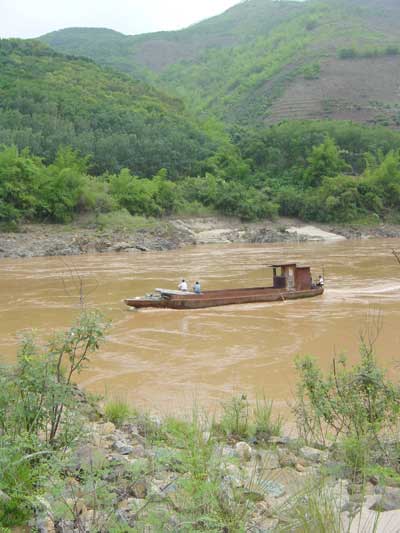 |
The Upper Mekong river near Xishuangbanna in the
Yunnan province (China). Note the broad river banks at low water.
photo TianZi Biodiversity Centre |
|
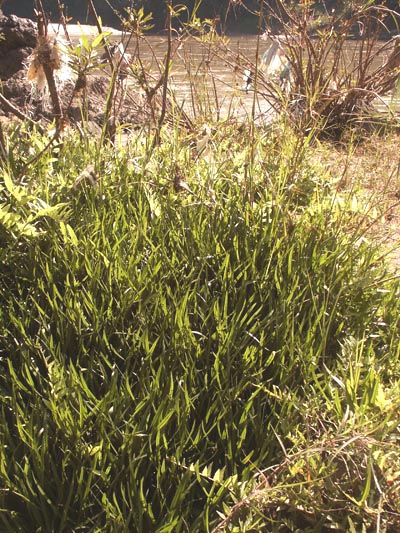 |
A stand of C. crispatula var. yunnanensis on the river banks in the dry season. Note the plastic debris indicating high water level.
photo TianZi Biodiversity Centre
|
|
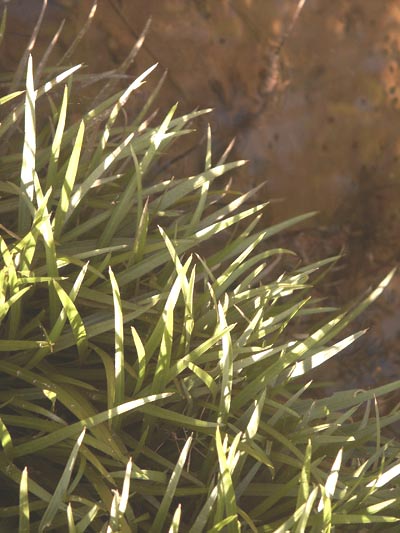 |
Close up of C. crispatula var. yunnanensis.
photo TianZi Biodiversity Centre |
|
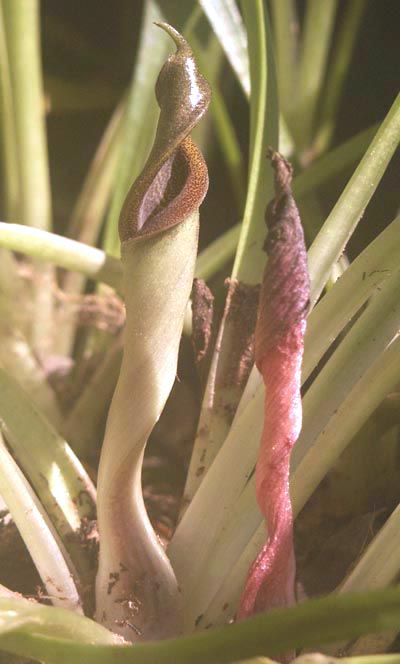 |
The spathe of C. crispatula var. yunnanensis has a short limb.
photo TianZi Biodiversity Centre
|
|
| |
|
|
|
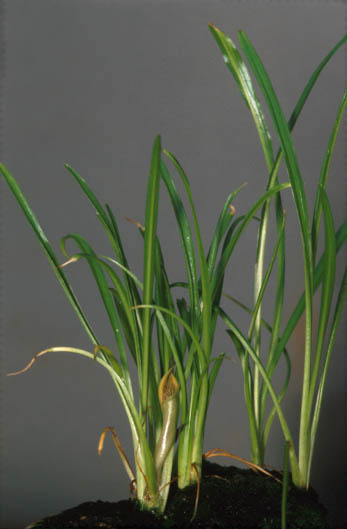 |
Emerged cultivated C. crispatula var. yunnanensis in the Botanical Garden of München (D) originating also from Xishuangbanna
(Yunnan).
coll. Bogner
photo Gerlach
|
|
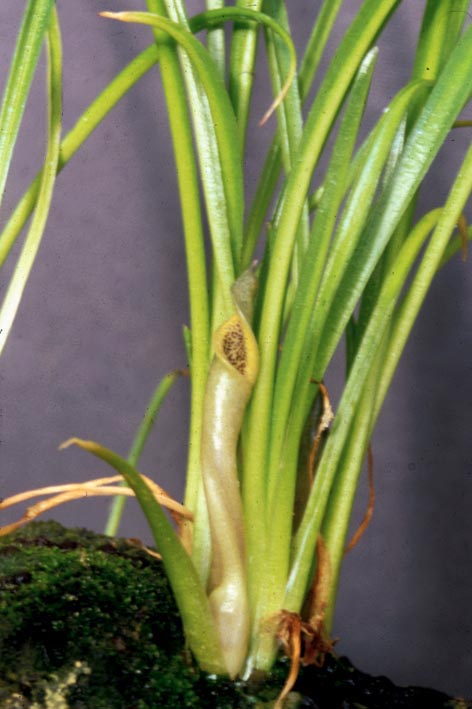 |
The spathe of C. yunnanensis has a rather
short tube and also a short limb of the spathe with a more or less pronounced small tail.
coll. Bogner
photo Gerlach
|
|
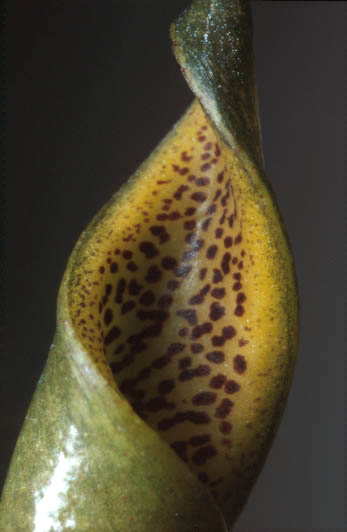 |
The limb of this spathe has regular red dots on a
yellow background.
coll. Bogner
photo Gerlach
|
|
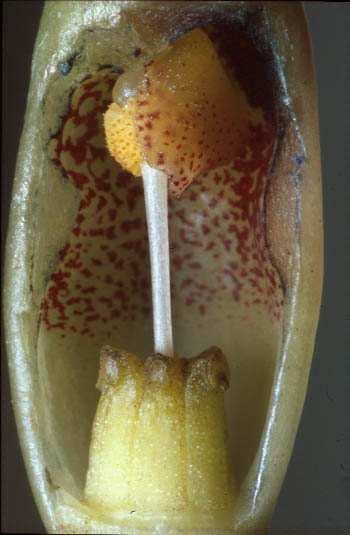 |
The lower part of the inflorescence, the
'kettle'. Note the constriction in the kettle wall half way and the red dots on the inside
wall.
coll. Bogner
photo Gerlach
|
|
| |
|
|
|
 |
Along the Mekong in N Thailand at low water (see below). Mixed populations of var. crispatula and var. yunnanensis.
photo Idei
|
|
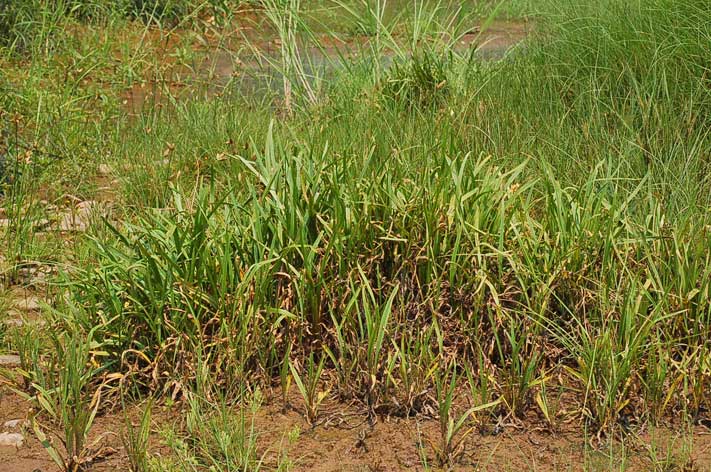 |
Close up of a big patch.
photo Idei
|
|
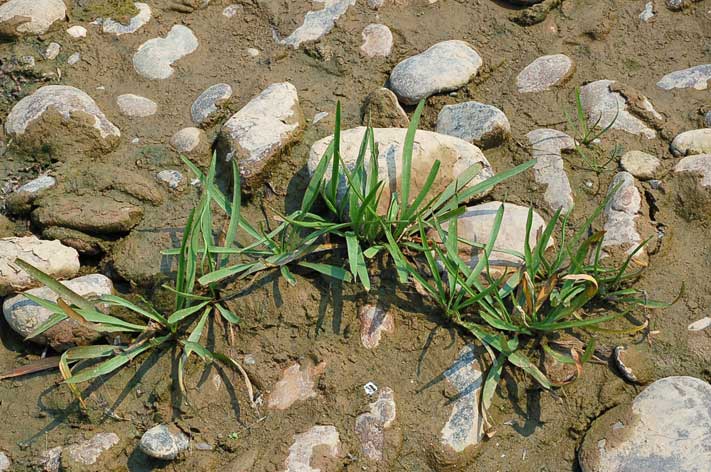 |
Small patch more close to the riverbed.
coll. Idei TMK-01A
photo Idei
|
|
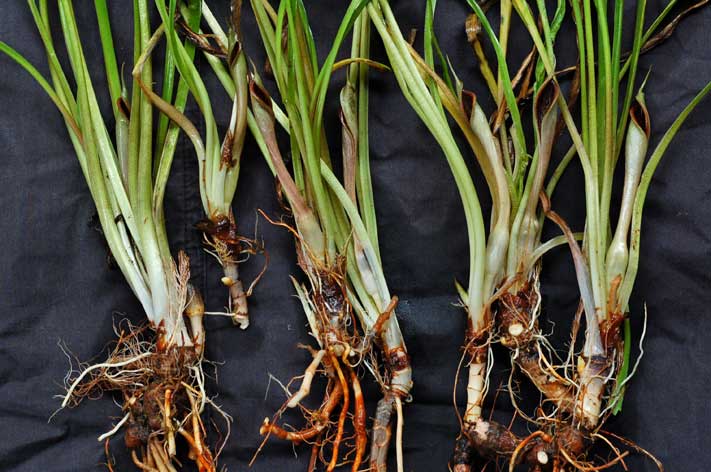 |
Dug out plants. Note the strong rhizome and (contractile) roots.
coll. Idei TMK-01A
photo Idei
|
|
| |
|
|
|
 |
Cultivated specimen. Also in cultivation the plants emerge in early spring and go dormant in summer (small terete leaves).
coll. Idei TMK-01A, cult B1148
|
|
 |
Spathe with a more pronounced tail.
coll. Idei TMK-01B, cult B1149
|
|
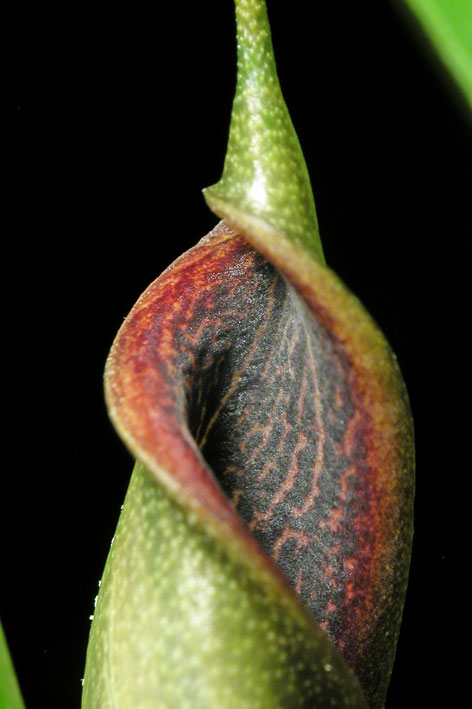 |
This spathe has more irregular purple lines on the limb.
coll. Idei TMK-01A, cult B1148
|
|
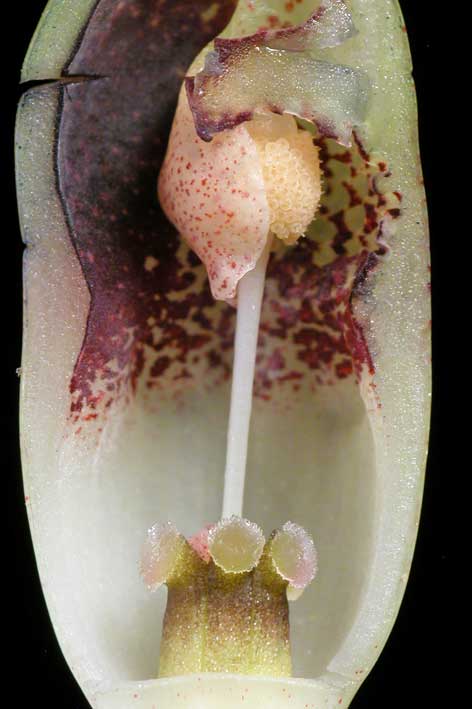 |
Opened kettle. Note the massive transverse ´ceiling´ in the kettle.
coll. Idei TMK-01A, cult B1148
|
|
| |
|
|
|
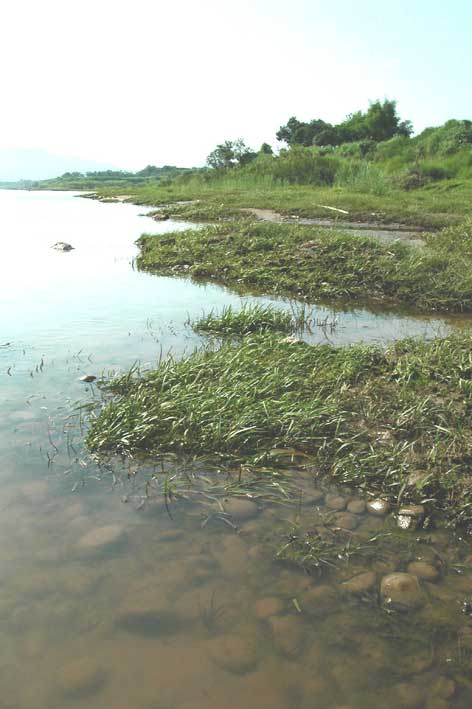 |
The Mekong river in northern Laos in the dry
season.
photo Sasaki
|
|
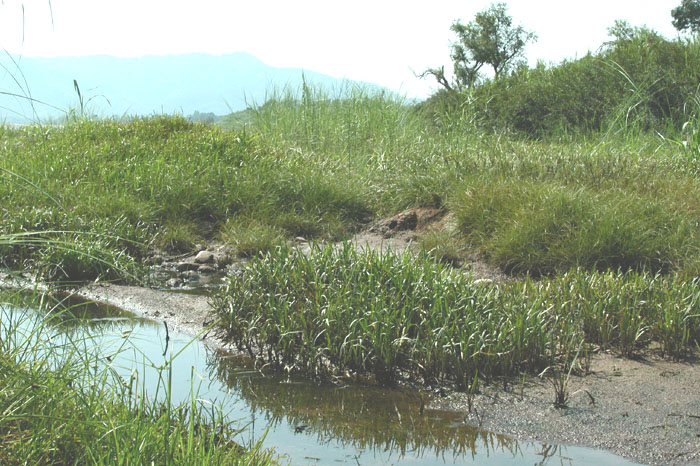 |
Big stands of C. crispatula var. yunnanensis on the banks
photo Sasaki
|
|
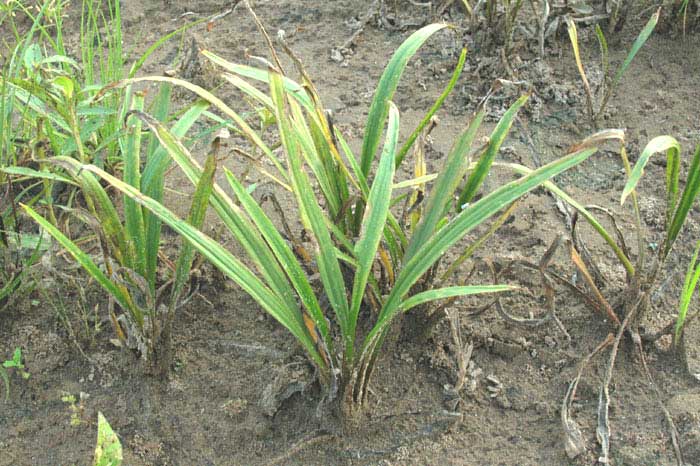 |
The leaves have an acute top and base and are
stiff. Submerged grown leaves may be different.
photo Sasaki
|
|
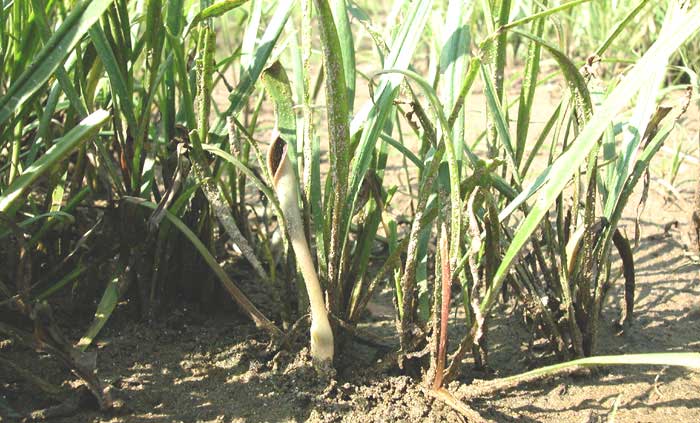 |
Spathe of C. crispatula var. yunnanensis.
photo Sasaki
|
|
| |
|
|
|
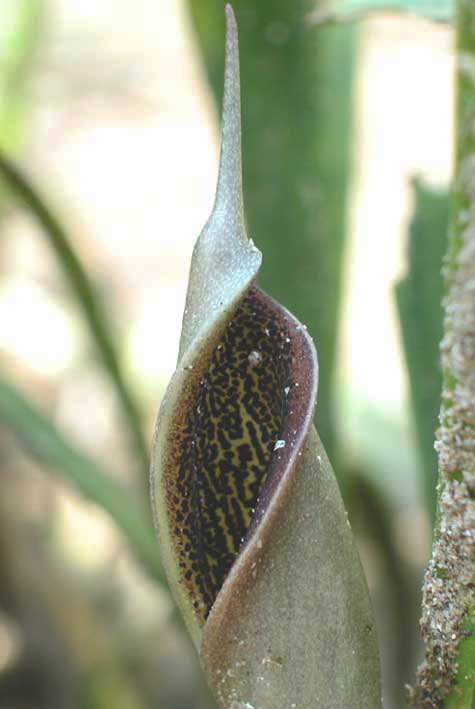 |
The limb of the spathe.
photo Sasaki |
|
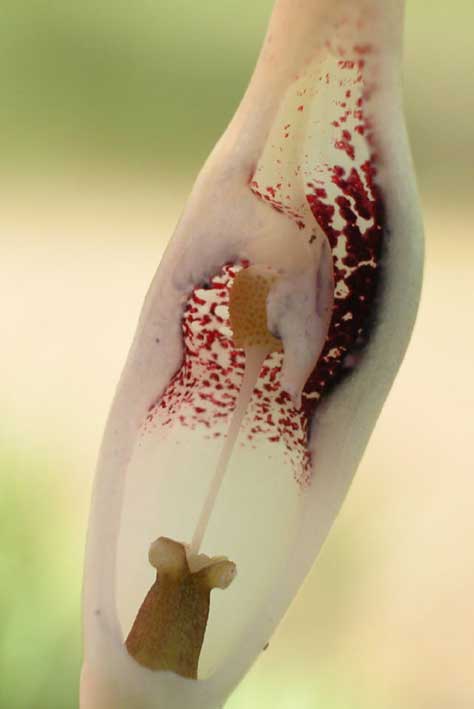 |
Length section of the kettle.
photo Sasaki
|
|
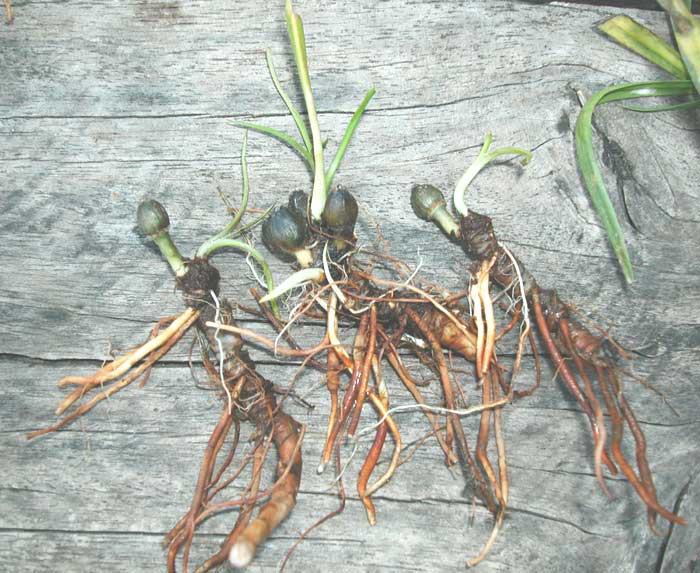 |
Fruiting plants. Note the thick rhizome.
photo Sasaki |
|
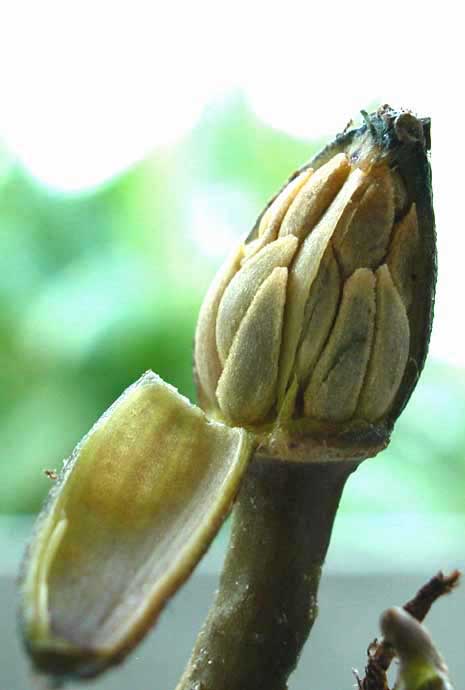 |
Manually opened fruit with seeds.
photo Sasaki
|
|
| |
|
|
|
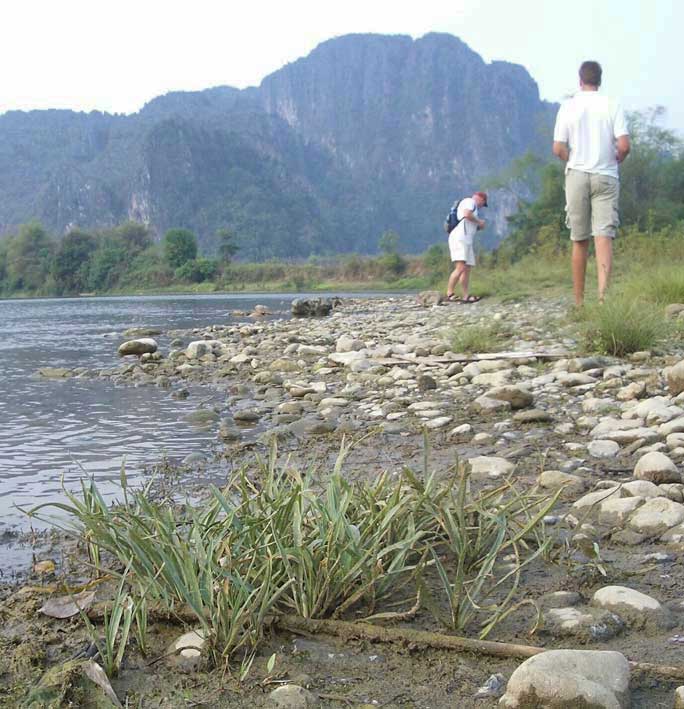 |
A tributary of the Mekong river in Laos. On the
foreground C. crispatula var. yunnanensis
photo Christensen |
|
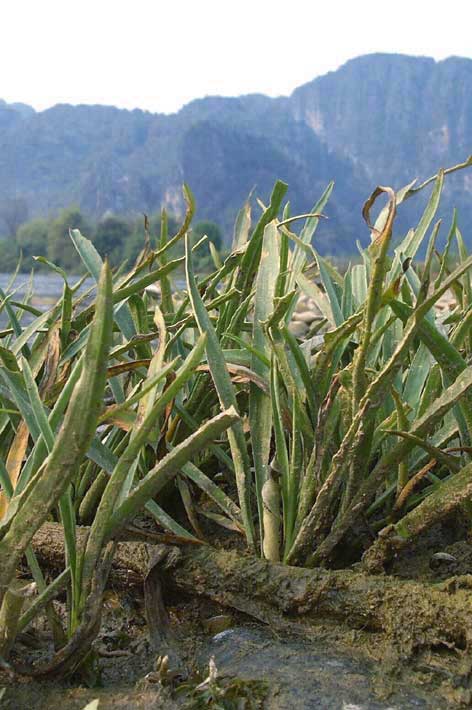 |
Close up of a patch of flowering plants
photo Christensen
|
|
 |
Limb of the spathe without a tail
photo Christensen |
|
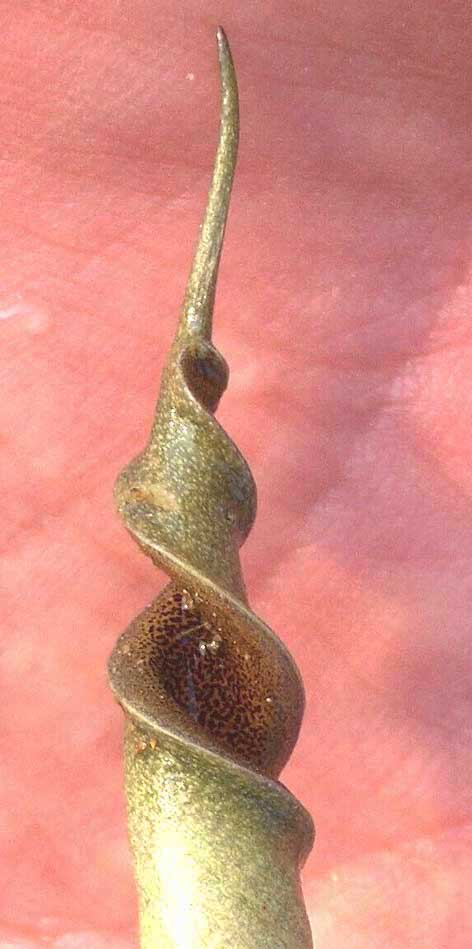 |
Limb of the spathe with nearly a full turn
twist.
photo Christensen
|
|
| |
|
|
|
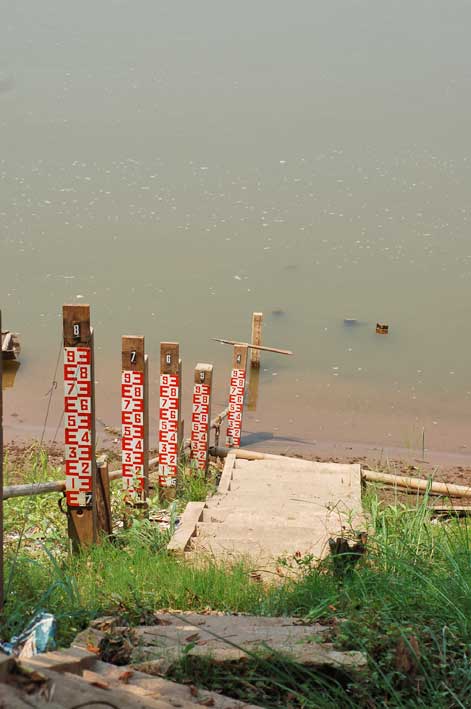 |
The Mekong river at low level in N. Thailand. The water may rise 10 meter! Several Cryptocoryne species are adapted for that environment.
photo Idei |
|
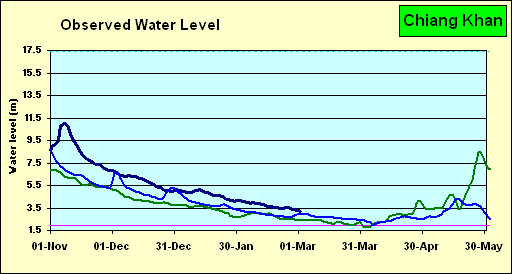 |
The Mekong River Commission gives an online report on the water level. Depending on the width of Mekong, the amplitude may vary considerable. |
|
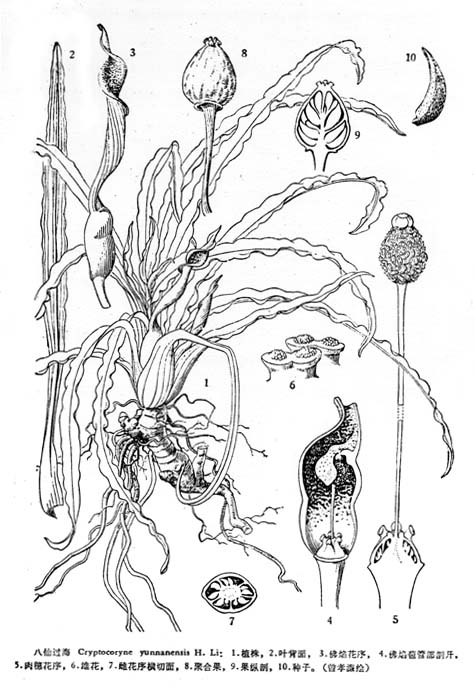 |
Drawing of the type specimen of C. crispatula var. yunnanensis. Note that the leaves are more undulated as in the cultivated specimens.
drawing in H. Li |
|
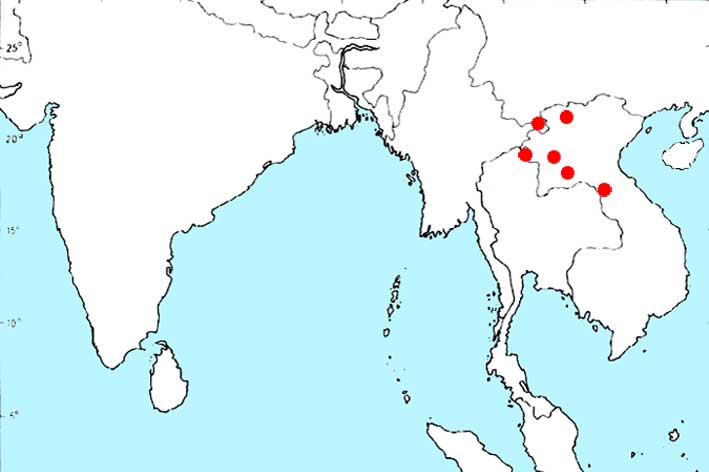 |
Distribution of C. crispatula var. yunnanensis in China (Yunnan), northern Thailand and Laos.
|
|
| |
|
|
|
The climate is quite different from that of the rainforest. During the dry
season they grow emerged in the riverbed (low water level) full exposed to the sun with temperatures up 40 °C. Plants may be seasonal in the way that
they have a quite different habitus when they are fully submerged in the heavy stream.
The available collections are however mostly made in the dry season.
|
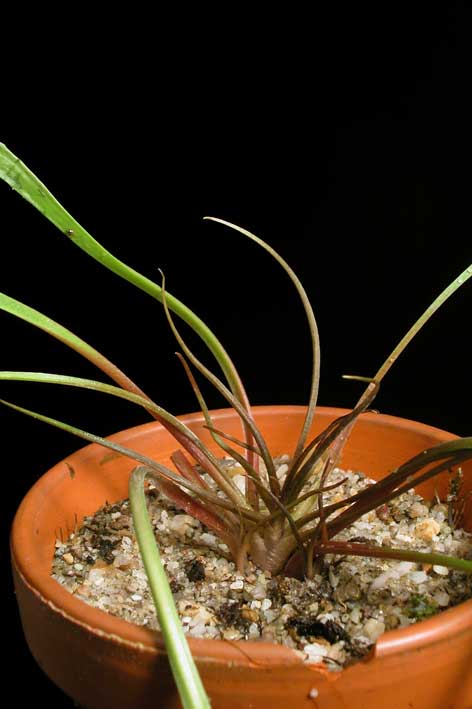 |
 |
A Cryptocoryne from the Mekong river in Laos, showing the transition from normal leaves (30+ cm) to terete leaves. The latter leaves are 'spike' form and reach from 2 to 10 cm and are circular in cross section. This is apparently an adaptation to the next half year submersed in cloudy, swift running water and should be regarded as a dormant phase.
In cultivation, this starts in June (at me). Some other species fully collapse in a few weeks, resting some small spikes coming up. This species is more gradual (picture date 8 July 2009). In early spring they 'burst out' again.
coll. Idei LK5601
|
Cryptocoryne crispatula var. yunnanensis is because of its seasonal character not well suited for the normal aquarium. Also it requires a lot of light (full sun!).
For reference to the other plants and the literature see the page on the crispatula group.
Updated August 2010 |
|